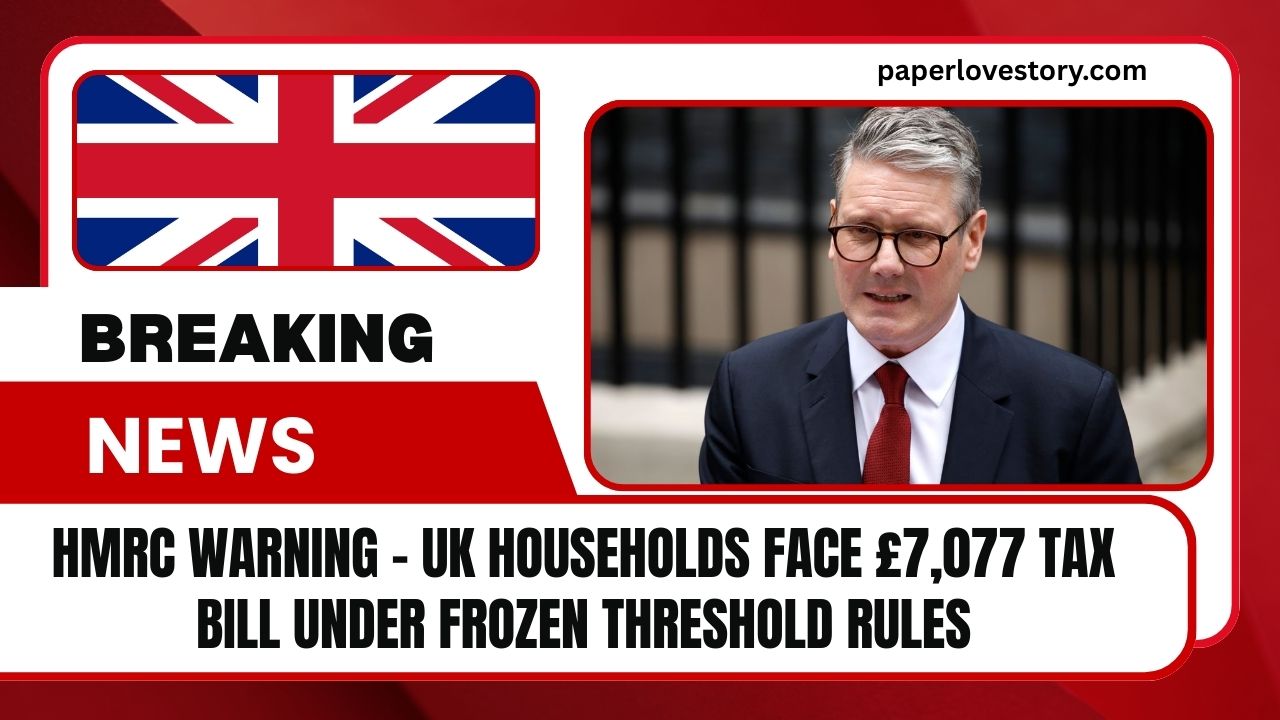Millions of UK earners are facing a significant stealth tax increase due to fiscal drag—a mechanism where frozen tax thresholds combined with rising incomes push more people into higher tax brackets, without any changes in the actual tax rates.
This silent shift means households could end up with £7,077 extra tax billed to them by 2030.
How the Rule Breach Works
In 2022, the UK government froze key income tax thresholds, including the personal allowance and the bands for basic, higher, and additional rates.
This freeze, originally until 2026 and later extended to 2028, means that as wages increase, so does tax liability—often without people realising.
By 2030, someone earning £100,000 in 2022 could face a £7,077 tax increase solely because thresholds didn’t move with inflation or wage growth.
Projected Extra Tax Burden
Here’s a breakdown of the estimated additional tax impact by income bracket, assuming wage growth continues as projected:
| 2022 Income | Estimated Extra Tax by 2030 |
|---|---|
| £35,000 | £926 |
| £50,000 | £4,632 |
| £80,000 | £5,635 |
| £100,000 | £7,077 |
On average, the higher the income, the more severe the impact—highlighting how fiscal drag disproportionately affects middle to higher earners.
Why It’s a Stealth Tax
- No change in rates or bands: Tax rates remain the same, making the tax hike almost invisible to taxpayers.
- Slow creep effect: Small income increases over time mean people cross thresholds and pay more, but often don’t notice.
- Labelled “tax by stealth”: Financial experts warn this is a major silent method of revenue generation, especially as inflation and wages rise.
Implications for Households
Despite no visible policy changes, many are unknowingly paying more. Without proactive planning or awareness, households may face unexpected HMRC letters demanding £7,077—or whatever the calculated shortfall—years down the line.
What You Can Do
- Review your tax code and take-home pay regularly.
- Plan ahead—if you’re on £80,000 or more, budget for potential sneaky tax hikes.
- Consult a tax advisor to estimate your likely fiscal drag impact.
- Watch for HMRC communications, as demand letters may land quoting exact additional sums.
The looming HMRC demand for up to £7,077 extra tax by 2030 is no accident—it’s the result of fiscal drag in action.
With thresholds frozen since 2022, wage growth alone is pulling millions of taxpayers into higher tax bands. This silent tax surge disproportionately affects middle- and high-income earners, many of whom may be blindsided by substantial HMRC demands.
Awareness, forward planning, and potential consultation with tax professionals are key to preventing financial shocks. Face it now—so HMRC doesn’t catch you off guard later.
FAQs
Why might I get a letter from HMRC demanding thousands more in tax?
Because of fiscal drag—your income has risen while tax thresholds remained frozen, increasing your tax liability without rate changes.
Who is most affected by the £7,077 potential bill?
Someone earning £100,000 in 2022 could face that exact amount by 2030, assuming wages rise in line with projections.
Can I avoid this hidden tax?
You can plan proactively by reviewing your tax status, budgeting for future liability, and seeking professional tax advice to minimise surprises.
